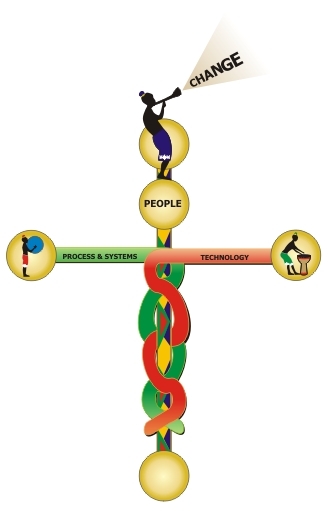

In the human body, laminin molecules bind together to form integrated sheets of connective tissue. These integrated sheets of connective tissue keeps cells in place and allows them to function properly. Laminins also anchor cells to one another – therefore contributing to growth and sustainability.
At Change Capacity we believe that successful change requires an approach that ensures people, processes, systems, technology and resources form an integrated whole towards the achievement of successful change outcomes.
During change individuals, teams and departments need to be anchored to one another to ensure a resilient environment.
Our philosophy and approach towards successful change ensures entities and sub-entities function as an integrated whole – therefore taking cognisance of the impact or effect of actions and decisions in one area on another.
Laminins form an integral part of the structural scaffolding in almost every tissue of an organism. They are vital for the maintenance and survival of tissues.
At Change Capacity we believe that successful change requires people, processes, systems, technology and resources to form structural scaffolding that ensures sustainability and growth – hence beyond maintenance and survival.
Research highlights the following three barriers to change failure:
• Resistance to change
• Inability of managers to deal with resistance
• Lack of change management competence
• Lack of management visibility and support
Our methodology and approach to change management is to ensure an accountability fit – therefore ensuring key people at the right levels are empowered to take accountability for planning and implementing successful change and overcome the barriers to successful change.
Change Capacity empowers people to change. As Wayne Widdis suggested: “Organisations don’t change – people change and then they change organisations”.








